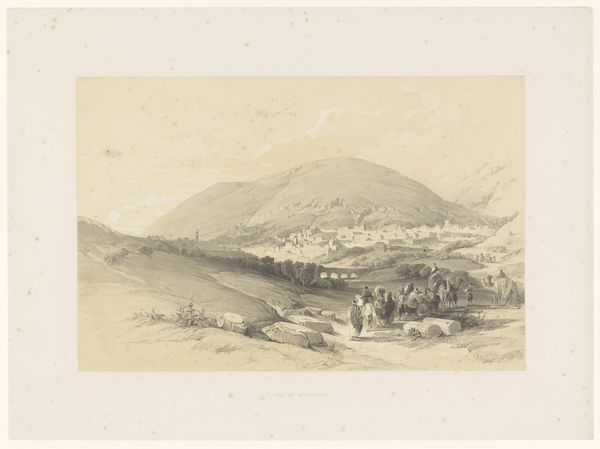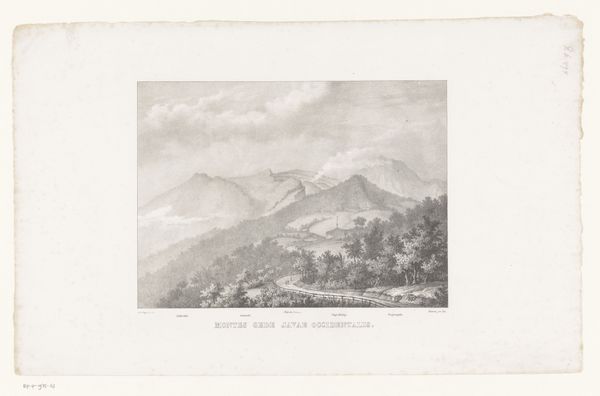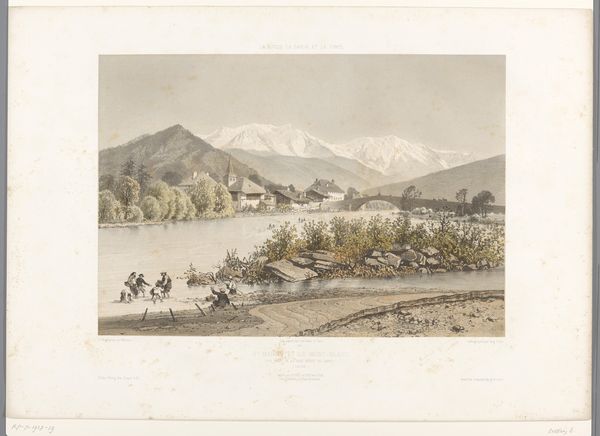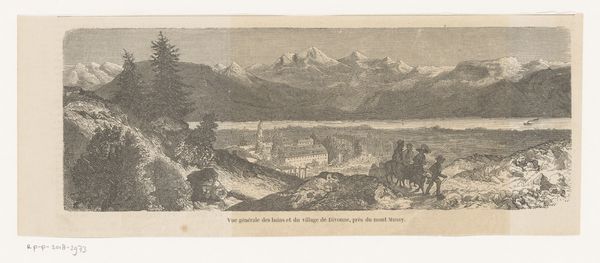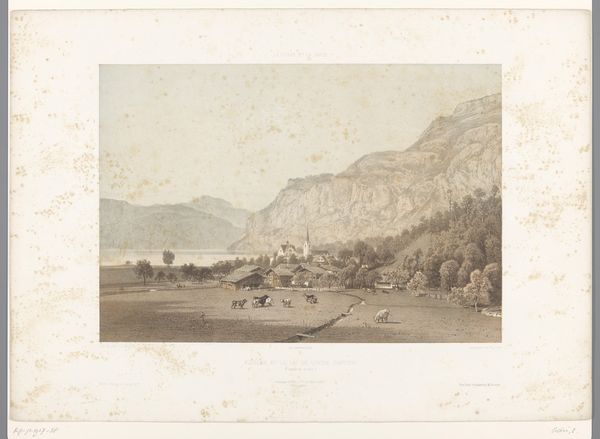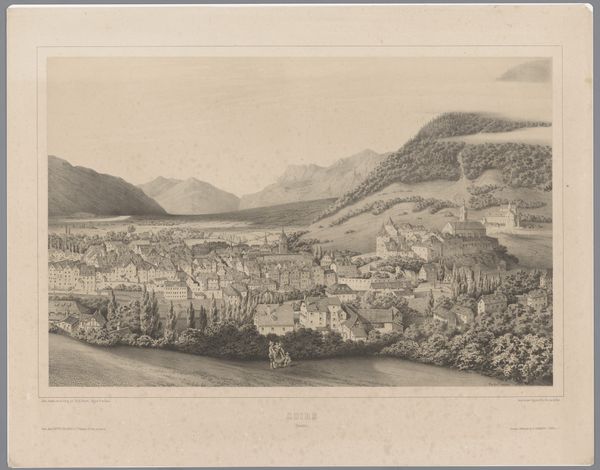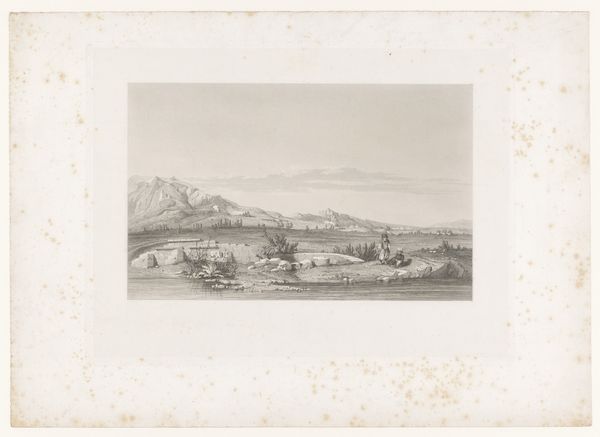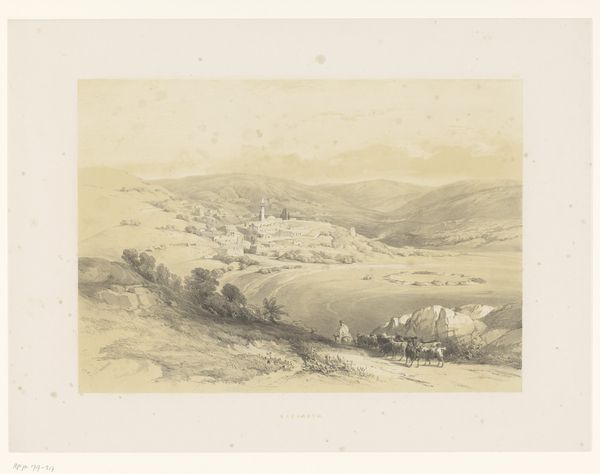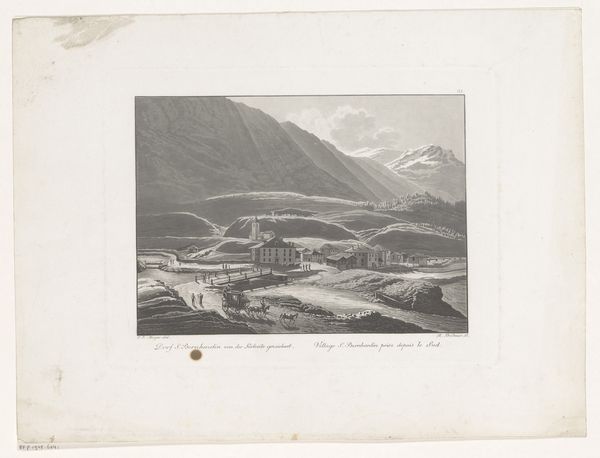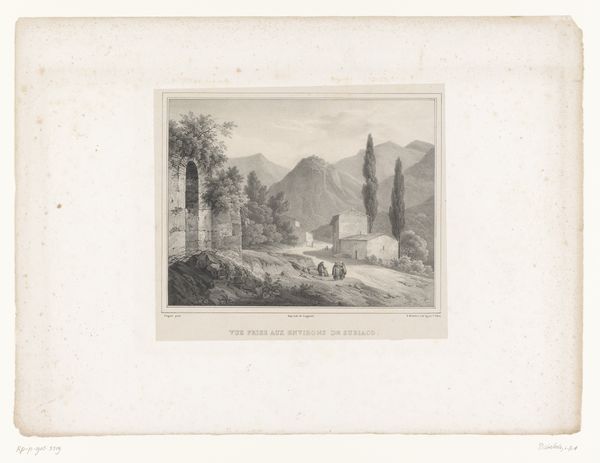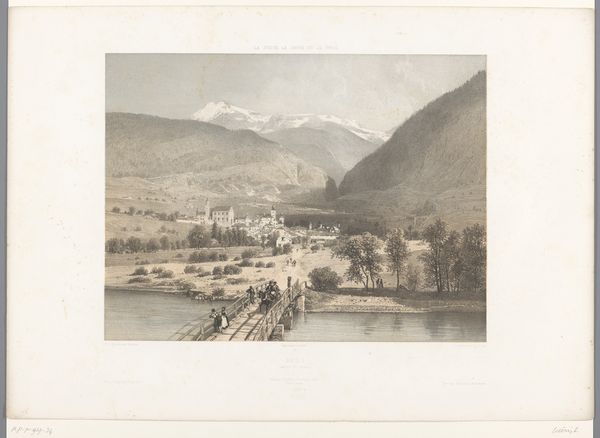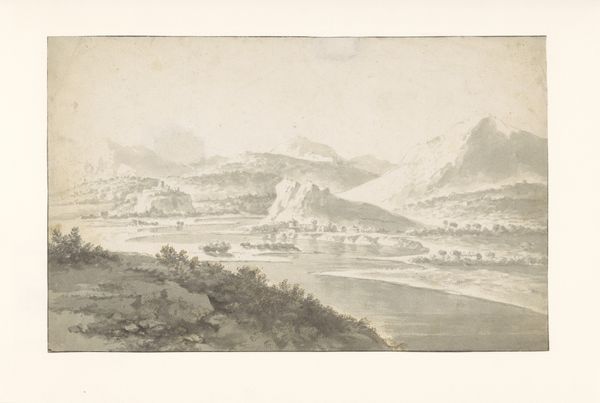
Dimensions: height 400 mm, width 565 mm
Copyright: Rijks Museum: Open Domain
Curator: I'm immediately drawn to the misty, almost ethereal quality of this etching. There’s a real sense of romanticism here, a wistful gazing upon the scene. Editor: Absolutely. This is "View of Sion in the Rhone Valley," created in 1859 by Eugène Cicéri. What stands out to me is not only its aesthetic, but its relationship to the tumultuous social backdrop. Landscape wasn't just landscape then; it spoke to ideas of nation, belonging, and who had the right to claim that belonging. Curator: I can see that. Those mountaintop fortresses feel incredibly symbolic – towering, almost looming over the peaceful valley. I’m wondering if those structures can tell a story. What was Sion at that point in history, how did those in power mark their place? Editor: Precisely! Sion, in the mid-19th century, was grappling with cantonal identity within a still-forming Switzerland, deeply tied to conservative power structures. Those castles become visual markers of historical authority – echoes of feudalism made concrete. Cicéri is carefully positioning the town beneath the gaze of the past. Curator: That's fascinating. So, the very composition— the valley floor beneath the imposing castle peaks—is actively reinforcing this established social hierarchy. Are there symbols of hope to imagine some potential for change or a sign of tensions to come? Editor: It's subtler than outright protest. The figures on the valley floor almost blend in with their surroundings. Are they meant to just pass by, maybe unaware? There is more land than buildings, the valley makes it an open space... almost offering the possibility of another story waiting to be written. But these romantic-era artworks could simultaneously celebrate a landscape while unintentionally highlighting social divisions of its time. It can do both. Curator: Right, which might also point to some personal anxieties in Cicéri. He is depicting a world with some major shifts, changes that he seems ambivalent about embracing fully, judging from the muted tones and heavy focus on the old strongholds... A nostalgia with an undeniable tension beneath. Editor: An incredibly perceptive read. Cicéri gives us a visually stunning landscape steeped in history. But in today's era we should not be complacent by taking things as only 'beautiful'. He does show how even the most picturesque view is politically loaded with power, longing, and even a tinge of foreboding. Curator: Indeed, revisiting it now helps reveal not just what was seen then, but also what was felt and feared—the lasting imprints on even the most ‘objective’ depictions. Thanks to Eugène Cicéri's composition and your insight on history!
Comments
No comments
Be the first to comment and join the conversation on the ultimate creative platform.
